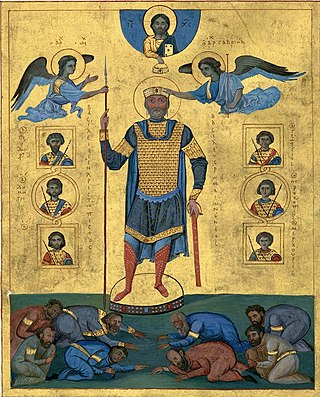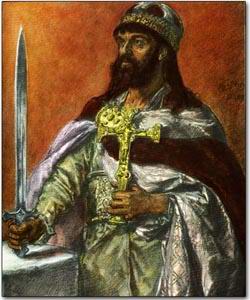This article needs additional citations for verification .(September 2018) |
| Millennium: | 1st millennium |
|---|---|
| Centuries: | |
| Decades: | |
| Years: |
| 995 by topic |
|---|
| Leaders |
| Categories |
| Gregorian calendar | 995 CMXCV |
| Ab urbe condita | 1748 |
| Armenian calendar | 444 ԹՎ ՆԽԴ |
| Assyrian calendar | 5745 |
| Balinese saka calendar | 916–917 |
| Bengali calendar | 402 |
| Berber calendar | 1945 |
| Buddhist calendar | 1539 |
| Burmese calendar | 357 |
| Byzantine calendar | 6503–6504 |
| Chinese calendar | 甲午年 (Wood Horse) 3691 or 3631 — to — 乙未年 (Wood Goat) 3692 or 3632 |
| Coptic calendar | 711–712 |
| Discordian calendar | 2161 |
| Ethiopian calendar | 987–988 |
| Hebrew calendar | 4755–4756 |
| Hindu calendars | |
| - Vikram Samvat | 1051–1052 |
| - Shaka Samvat | 916–917 |
| - Kali Yuga | 4095–4096 |
| Holocene calendar | 10995 |
| Iranian calendar | 373–374 |
| Islamic calendar | 384–385 |
| Japanese calendar | Shōryaku 6 / Chōtoku 1 (長徳元年) |
| Javanese calendar | 896–897 |
| Julian calendar | 995 CMXCV |
| Korean calendar | 3328 |
| Minguo calendar | 917 before ROC 民前917年 |
| Nanakshahi calendar | −473 |
| Seleucid era | 1306/1307 AG |
| Thai solar calendar | 1537–1538 |
| Tibetan calendar | 阳木马年 (male Wood-Horse) 1121 or 740 or −32 — to — 阴木羊年 (female Wood-Goat) 1122 or 741 or −31 |

Year 995 ( CMXCV ) was a common year starting on Tuesday (link will display the full calendar) of the Julian calendar.







